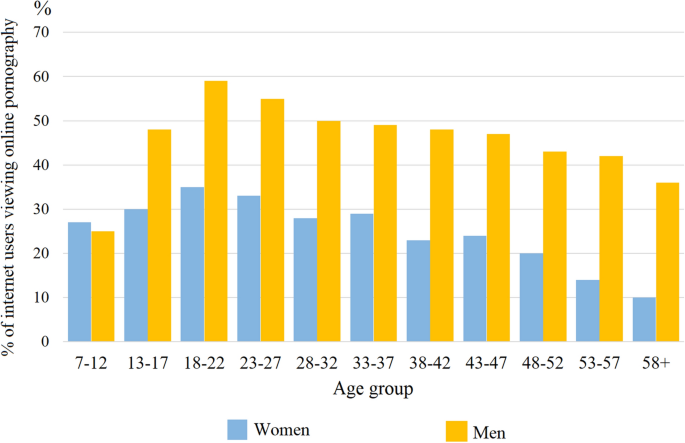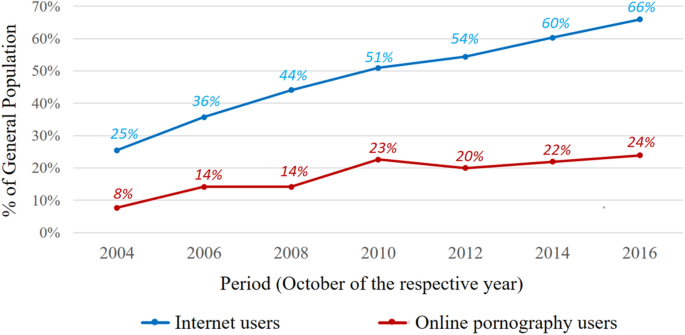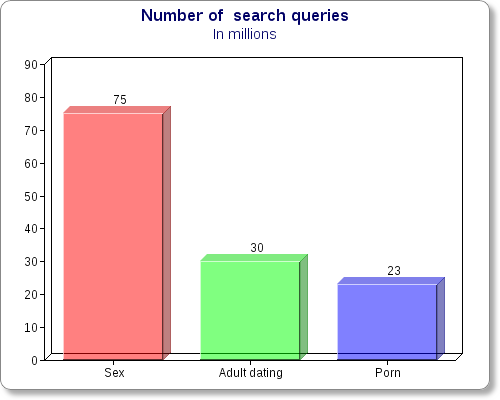[CN: Contains links to SFW pages on NSFW/porn sites] Everybody loves a good porn usage story in the mainstream media. The latest one to hit the rounds was this one from Salon/Alternet about the Middle East’s use of porn, but these stories do the rounds quite regularly. They are however often based on really shoddy research methods or misunderstandings about the internet. And yet, this is an area that’s worth studying, reporting and reading about. It’s interesting but there are real social issues at stake too. We need to know about this as a society, for the sake of policy and (for porn that was created by engaging in terrible behaviour) law enforcement. So I’ve put together a little field guide to porn usage stories in the popular media.
TL;DR – Most news reports about porn use are flawed or misleading. Most news reports about porn use are flawed or misleading. Measures of porn use are either easy to obtain and misleading or meaningful but hard to obtain. More research is needed.
I generally don’t like the cui bono/who benefits approach because it privileges conspiratorial thinking unjustifiably. But with these types of stories, it’s not such a bad question since they are so often used to push an agenda. So the first thing I’d ask is what are the porn use stats from a given story used to “prove”? Here are some of the more common ones I’ve seen recently:
- That “those other people” are just as perverted as “us” teehee
- That “those other people” are sexual “deviants”
- That there is too much porn and it should be regulated (eg. this page)
- That we must think of the children!!
- That regional differences are interesting
- That people’s porn preferences are interesting
- That porn is inherently corrosive/violent/misogynistic
- That a lot of porn is corrosive/violent/misogynistic
- That porn causes certain types of bad behaviour
- That porn has certain benefits
Often these stories are based on data provided by commercial websites in the porn industry (eg. the above Salon/Alternet article was based on PornMD’s interactive search data tool). Which doesn’t necessarily make it suspect. Often these sites do have access to a lot of quality data. But at the very least it means a lack of peer review and a lot of other potential problems. There is of course just a lot of dodgy methodologies out there which this BBC article gives a good overview of. For an intro into an academic study of porn, these two articles are pretty good.
The next thing that gets confused is what’s actually being measured. So, how would we measure porn prevalence and porn preference? Let’s look at some of the ones that are often found in these stories, even if many of them are terrible:
- Number/percentage of websites: Fake example – 37% of all websites are porn! This is probably the worst measure of all for both prevalence and preference. Just because a website exists doesn’t mean people are using it. Worse, it is possible to have one person deploy thousands or even millions of template-based websites at scale, which would really mess things up. Because there’s a significant intersection between online porn and spam, there are likely to be lots of porn networks/spammers with millions of sites each.
- Top search queries: Fake example – 5 of the top 10 searches on Google during 2014 were sex-related! This like the PornMD ‘tool’ and is another super-bad way to measure how popular porn is. Top lists of searches don’t mean shit if you don’t know what the overall search patterns are. If the top search terms (which Google seems to publish every year) account for 0.4% of all searches then who cares? What we do know is that people search for a lot of very different stuff, our searches are getting more unique and a full 15% of searches made on Google have never been made before. Also, top search terms are by necessity very generic, usually one-word queries. And if someone searches for “sex”, it’s presumptuous to say this always means they are looking for porn.
- Percentage of total search queries: Fake example – 17% of searches on Google are for porn-related topics. This is a much better measure because it forces whoever is doing the study to classify all searches (or a representative sample) before spouting nonsense. But while it’s a major component of prevalence, it’s not a fully accurate measure of it because that’s not the only way that people might end up watching porn. They might for instance just go to a major porn website. It’s very possible to have a country where this is by far the most popular way of accessing porn, and yet many news stories pretend like this is not a thing.
- Percentage of internet uploads/downloads: Fake example – 25% of the internet’s bandwidth is being used to transmit porn. This is a slightly better measure for overall prevalence because it looks at actual website browsing behaviour, not just the search which really comes before the porn-viewing. The main bias this introduces is the fact that so much porn is online streaming video which requires a disproportionately high amount of bandwidth. Let’s say someone spent two hours reading news websites and then watched a five minute porn video. If you looked at bandwidth it might say 95% porn, which I think is misleading. The other major challenge is that this is very tricky to measure. The crappier metrics listed so far are much easier to obtain, but here you either have to be an agency that spies on everyone like the NSA, or you must use some sampling, talk to ISPs, make sure the sampling is representative, try and identify encrypted packets etc. Of course the other way is to try get bandwidth data directly from major porn websites and try to extrapolate, but either way this type of research is very error-prone. For example, this pretty-flawed study
- Website visitors: Fake example – 33% of women and 500% of men had visited a porn website in the last month. This is a decent measure because it gets down to actual behaviour, as opposed to something like bandwidth which is a biased measure. Still, it conflates occasional and heavy users. The other question is how this is obtained. I’ve seen stories about data obtained by asking people about their porn viewing habits. Just…no. Otherwise, again it’s pretty hard to measure. To identify how many people keep coming back through the same browser you’ll need to use cookies (which people are likely to delete especially after viewing porn websites) or something like browser fingerprinting which creates major privacy issues. Millions of people watch porn from countries where it’s illegal. This further complicates the data due to VPNs, blocking, things like the Great Firewall of China etc. Not to mention that putting people’s privacy at risk here could mean direct harm.
- Time spent on sites/categories: Fake example – 50% of internet users spend at least one hour a month on porn sites, 35% spend at least two hours etc. Of content that’s seen, this is the breakdown of categories by time spent viewing them: X, Y Z. This would be by far the most useful kind of breakdown. We’d be able to see a very good measure of how many people watch porn, how seriously different people take it and what are they watching. Unfortunately, for the reasons I’ve listed, user-based behaviour is really hard to put together. Category-based behaviour is a little easier since individual porn websites track that reliably (eg. Pornhub’s data insights blog).
So there is an inverse relationship between how useful a metric is with how easy it is to measure. Which is the case for many areas of study so luckily science is not about to end soon. But we do need a destigmatised, better-funded science of porn studies–-because if there’s one thing that we do know reliably it’s that it makes a difference to the lives of its consumers and non-consumers.





0 Comments